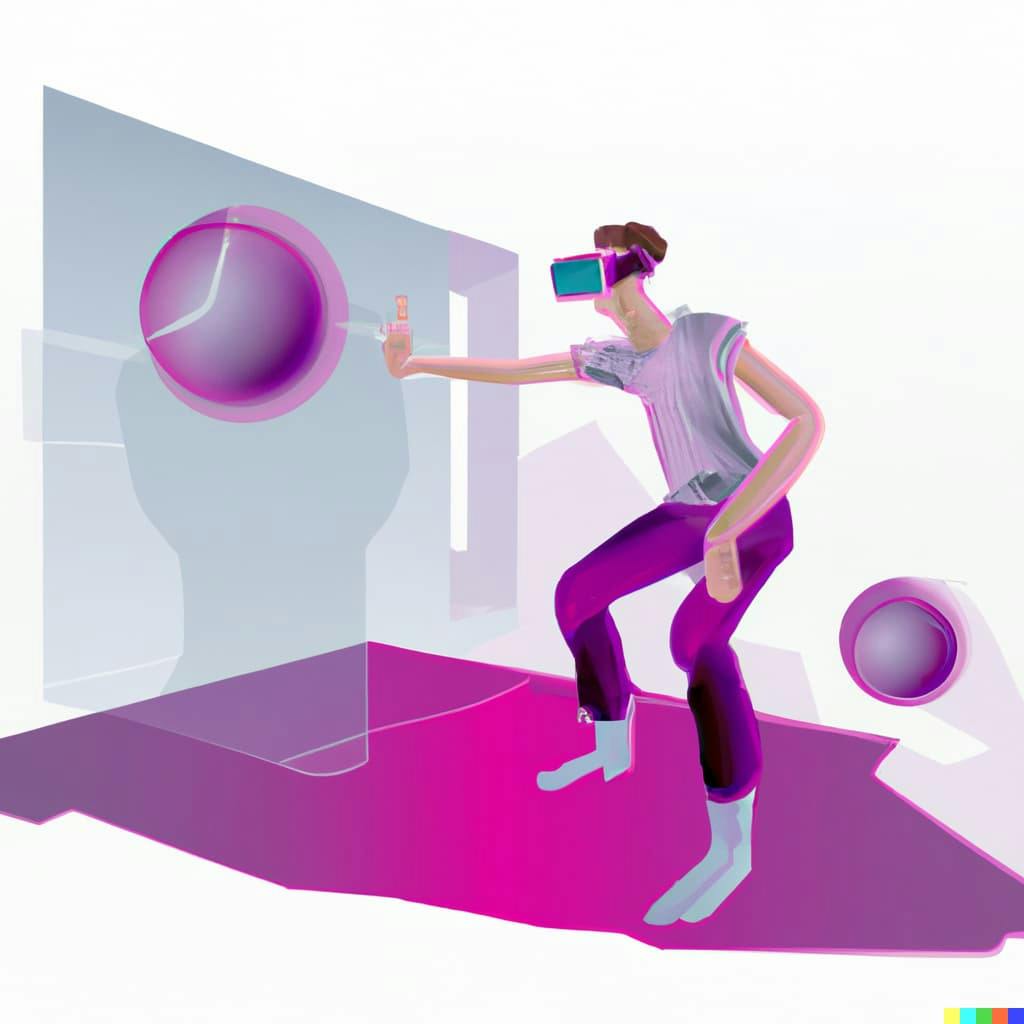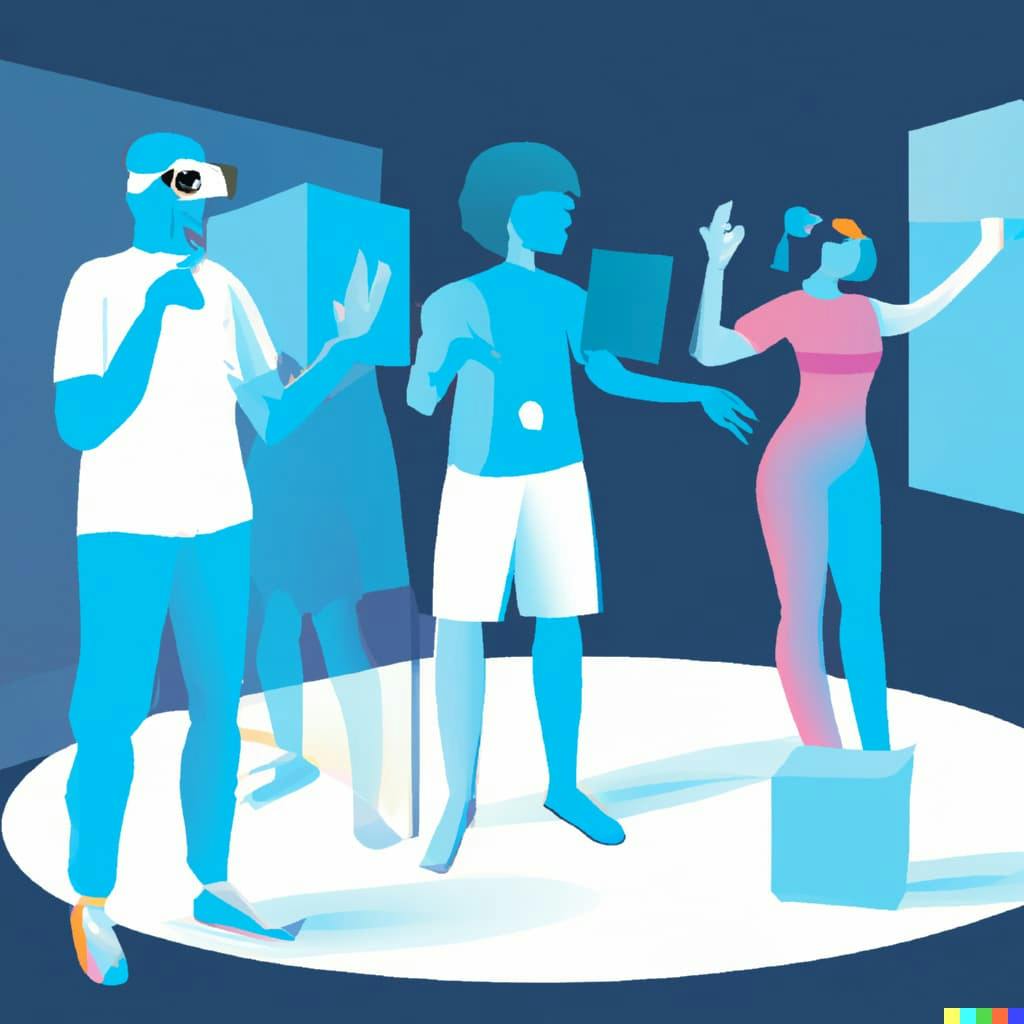What is the future of technology in 2023?
As a technologist, I am always excited to think about the future and what it holds for us in terms of technology.
It’s hard to believe that we are already approaching 2023, and with each passing year, technology continues to advance at an incredible pace.
So what can we expect in the future of technology in 2023? It’s difficult to say for certain, but there are 5 key trends and developments that we can keep an eye on.
1. Generative AI
Generative AI is a really interesting and rapidly growing area of technology. This type of AI is designed to generate new content, such as text, images, or music, based on a set of input data. It’s a powerful tool that has the potential to revolutionize industries and change the way we create and consume content. So if you’re interested in the future of technology and creativity, then generative AI is definitely a topic you don’t want to miss!
How does generative AI work?
Generative AI works by using machine learning algorithms to analyze a set of input data and generate new, original content based on that data. This content can be in the form of text, images, music, or any other type of media. To do this, generative AI systems use a combination of neural networks and statistical models to process and analyze the input data. They then use this information to generate new content that is similar to the input data, but also original and unique.
This is often done using a process called “training,” where the generative AI system is fed a large dataset and then “learns” to generate new content based on the patterns and characteristics it has identified in the data. Once it has been trained, the generative AI system can then be used to create new content on demand. So, it’s a really interesting and powerful tool that has the potential to change the way we create and consume content in the future.
Benefits of generative AI
There are many benefits to using generative AI, both for individuals and for businesses. One of the main benefits is the ability to generate new content quickly and efficiently. With generative AI, you don’t have to spend hours or even days creating new content from scratch. Instead, you can simply input the data you want the AI to use, and it will generate new content based on that data. This can be a huge time-saver, especially for businesses that need to produce a lot of content on a regular basis.
Generative AI has the potential to revolutionize industries by automating tasks that were previously done by humans. This can lead to increased efficiency and cost savings, as well as freeing up time for humans to focus on more creative and complex tasks.
How generative AI is changing creative work?
In addition to automating tasks, generative AI also has the potential to inspire and facilitate creativity. By generating new and unique content based on input data, generative AI can provide creative professionals with new ideas and inspiration. It can also be used to quickly generate multiple variations of a design or piece of content, allowing creative professionals to explore and compare different options.
Overall, generative AI is an exciting and rapidly developing technology that is changing the way we think about creative work.

2. Augmented reality
Augmented reality (AR) is a type of technology that superimposes computer-generated images, sounds, and other sensations onto the real world, creating an enhanced or “augmented” reality. It has the potential to change the way we interact with the world around us and has a wide range of applications, from gaming and entertainment to education and healthcare. So if you’re interested in how technology is changing the way we experience the world, then AR is definitely a topic you don’t want to miss!
How does augmented reality work?
Augmented reality works by using computer-generated images, sounds, and other sensations to enhance or “augment” the real world. It does this by overlaying digital content onto the physical world, creating an enhanced reality that combines the virtual and the real.
To create this enhanced reality, AR systems use a combination of sensors, cameras, and other hardware to gather information about the physical world. This information is then processed by computer algorithms, which generate the digital content that is overlaid onto the physical world. The digital content can be in the form of images, sounds, or even haptic feedback (such as touch or vibration).
AR systems can be accessed using a variety of devices, including smartphones, tablets, glasses, and even head-mounted displays. These devices allow users to view and interact with the augmented reality, either by looking through a screen or by wearing a device that displays the digital content directly in front of their eyes.
Advantages and disadvantages of augmented reality
One of the main advantages of AR is that it can enhance the real world with additional information and functionality. This can be especially useful in fields like education, training, and healthcare, where AR can provide students and professionals with additional context and information as they learn and work.
Another way that AR could impact our everyday life is by helping us to communicate and collaborate with others. For example, AR could be used to facilitate real-time communication and collaboration with people in different locations, or to provide us with new and engaging ways to socialize and connect with others.
However, AR also has its share of disadvantages. One of the main disadvantages is the need for specialized hardware and software to access and use AR. This can be expensive and may limit the accessibility of AR to those who can afford it. Additionally, there is the potential for AR to be distracting or disruptive, especially if it is used in inappropriate settings or contexts. Finally, there are also potential privacy and security concerns to consider, as AR systems can potentially collect and share personal information.
The future of augmented reality in our everyday life
The future of augmented reality in our everyday life is looking bright and full of possibilities. As AR technology continues to advance and become more widely available, it has the potential to change the way we interact with the world around us in a number of ways.
One of the main ways that AR could impact our everyday life is by providing us with additional information and functionality in our everyday tasks. For example, AR could be used to provide us with real-time translations, directions, or other information as we move through the world. It could also be used to enhance our entertainment experiences, such as by providing us with new and immersive ways to experience movies, games, or other content.
Overall, the future of AR in our everyday life looks bright and full of possibilities. As the technology continues to advance, we can expect to see it being used in a wide range of applications and contexts, changing the way we live and interact with the world around us.

3. Virtual reality
Virtual reality (VR) is a type of technology that allows users to experience a fully immersive and interactive digital environment. It has the potential to change the way we interact with computers and has a wide range of applications, from gaming and entertainment to education and healthcare. So if you’re interested in how technology is changing the way we experience the world, then VR is definitely a topic you don’t want to miss!
How does virtual reality work?
VR works by using specialized hardware and software to create a simulated environment that users can interact with in real-time.
To create this immersive environment, VR systems use a combination of sensors, cameras, and other hardware to track the movements and actions of the user. This information is then processed by computer algorithms, which generate a corresponding digital environment that the user can interact with. The digital environment is typically displayed on a headset or other device that the user wears, allowing them to see, hear, and even feel the virtual environment as if it were real.
Virtual reality benefits and risks
One of the main benefits of VR is that it can facilitate training and education by providing students and professionals with a safe and controlled environment to learn and practice skills. This can be especially useful in fields like healthcare, where VR can be used to simulate real-world scenarios and allow students to practice procedures in a safe and controlled environment.
However, VR also has its share of risks. One of the main risks is the potential for distraction and disorientation, especially if the VR experience is not designed or used properly. There is also the potential for physical discomfort or injury, especially if the VR hardware is not used correctly or if users are not properly trained to use it. Finally, there are also potential privacy and security concerns to consider, as VR systems can potentially collect and share personal information.
What will the future of VR be?
The future of virtual reality looks bright and full of possibilities. As VR technology continues to advance and become more widely available, it has the potential to change the way we interact with computers and the digital world in a number of ways.
One of the main ways that VR could impact the future is by providing us with new and immersive experiences. For example, VR could be used to create new and engaging ways to experience movies, games, or other content, allowing us to fully immerse ourselves in virtual worlds and interact with them in a natural and intuitive way.
Overall, the future of VR looks bright and full of possibilities. As the technology continues to advance, we can expect to see it being used in a wide range of applications and contexts, changing the way we live and interact with the world around us.
4. Metaverse
The metaverse is a term used to describe a shared virtual space that is created and maintained by computer technology, and it has the potential to change the way we interact with the world and with each other. So if you’re interested in how technology is changing the way we experience the world, then the metaverse is definitely a topic you don’t want to miss!
What is the metaverse and how does it work?
The metaverse is created and maintained by a combination of hardware, software, and network infrastructure. It is accessed through devices like VR headsets or AR glasses, which allow users to fully immerse themselves in the virtual environment and interact with it in a natural and intuitive way.
Within the metaverse, users can interact with each other and with digital content in a variety of ways. They can communicate with each other using voice or text, and they can explore and interact with the virtual environment using their own avatar or digital representation. They can also create and share content with each other, such as virtual objects, experiences, or even entire virtual worlds.
Metaverse advantages and disadvantages
One of the main advantages of the metaverse is that it allows users to fully immerse themselves in a virtual environment and interact with it in a natural and intuitive way. This can be especially useful in fields like gaming and entertainment, where the metaverse can create new and engaging ways to experience content.
Another advantage of the metaverse is that it can facilitate communication and collaboration by providing users with a shared virtual space to interact and work together in real-time. This can be especially useful for remote teams or for people who are located in different parts of the world.
However, the metaverse also has its share of disadvantages. One of the main disadvantages is the potential for it to be used for nefarious purposes, such as cyberbullying or other forms of online harassment. As with any online space, there is a risk that the metaverse could be used to spread misinformation or propaganda, or to exploit users for financial gain.
There is also the potential for the metaverse to be used to manipulate users or to collect and misuse their personal information. For example, companies or individuals could use the metaverse to gather data on users’ preferences and behaviors, which could then be used for targeted advertising or other purposes.
What is the future of metaverse?
One of the main ways that the metaverse could impact the future is by becoming a hub for social interaction and communication. As more people become connected to the internet, the metaverse could become a place where people from all over the world can connect and interact with each other in real-time.
Another way that the metaverse could impact the future is by becoming a platform for commerce and entertainment. As more businesses and content creators embrace the metaverse, it could become a place where people can shop, play games, watch movies, and more.
Finally, the metaverse could also become a place where people can learn and work. With the ability to create and share virtual experiences and environments, the metaverse could become a platform for education and training, as well as a place where people can collaborate and work together on projects.
Overall, the future of the metaverse looks bright and full of possibilities. As technology continues to advance, we can expect to see the metaverse becoming an increasingly important part of our lives, changing the way we interact with the world and with each other.

5. Cybersecurity
Cybersecurity is the practice of protecting computers, networks, and devices from digital attacks and threats, and it is essential to ensure the safety and security of our personal and professional lives. So if you’re interested in how to protect yourself and your devices from online threats, then cybersecurity is definitely a topic you don’t want to miss!
Why is cyber security so important?
Cybersecurity is so important because it is essential to protect our personal and professional lives from digital attacks and threats. In today’s world, nearly every aspect of our lives is connected to the internet, from our personal devices and accounts to our professional networks and systems. This means that our sensitive information, such as financial data, personal identification, and confidential business information, is all vulnerable to digital attacks.
Cybersecurity is important because it helps to prevent these attacks and protect our sensitive information. It does this by implementing a variety of measures and technologies, such as firewalls, antivirus software, and security protocols, to prevent unauthorized access to our devices and networks.
In addition to protecting our personal and professional lives, cybersecurity is also important for the security and stability of society as a whole. Cyberattacks can disrupt critical infrastructure, such as power grids and transportation systems, and can even have global consequences. Ensuring the security of our online systems is therefore essential for the overall well-being of society.
What will cybersecurity be like in the future?
The future of cybersecurity is likely to be characterized by a number of trends and developments. One of the main trends is the increasing use of artificial intelligence (AI) and machine learning to enhance cybersecurity. These technologies have the potential to improve the speed and accuracy of cyber threat detection and response, as well as to automate many of the tasks involved in cybersecurity.
Another trend in the future of cybersecurity is the increasing focus on cloud-based security solutions. As more and more companies and organizations move their data and systems to the cloud, cybersecurity solutions that are designed to protect cloud-based systems will become increasingly important.
Finally, there is likely to be a continued emphasis on user education and awareness as a key component of cybersecurity. As cyber threats evolve and become more sophisticated, it will be increasingly important for individuals and organizations to understand the risks and to take steps to protect themselves and their systems.
Overall, the future of cybersecurity is likely to be shaped by a combination of technological innovations and a focus on user education and awareness. As the threats and risks associated with the digital world continue to evolve, cybersecurity will remain an essential practice for protecting our personal and professional lives.
Overall, the future of technology in 2023 looks bright and full of possibilities. As technology continues to advance, we can expect to see a wide range of new and exciting developments that will change the way we live and interact with the world. I can’t wait to see what the next year brings, and I hope you’ll join me on this journey as we explore the exciting world of technology together.
Editor’s Note
Almost all of the text in this article came from engineered prompts to ChatGPT.
The headings were found by manually searching long-tail keywords on Google using KeywordsEverywhere.com for additional SEO ideas.
The blog images were created by prompting DALL·E 2 with the following: futuristic, creative, bright colors, people using technology tools of the future, AR, VR.
All ChatGPT prompts began with “You are a friendly and experienced technologist. You explain things in a fun and interesting way at a high school level.”
For the main topic introductions, I prompted (Write three sentences introducing the topic “cybersecurity”). These attempts were mostly successful at producing the desired length.
For the meat of the content, I first started the prompts with “Write one paragraph explaining…” but it was producing much longer text.
I then changed the prompts to ‘write four sentences’ and ‘write one short paragraph’, however, the length of the output was the same, if not longer.
I ran into this issue more in this blog because each subsection was a long-tail keyword, compared to my previous blog “Should I write on Medium or my own blog?” where I used single prompts.
As a result, much more editing was required in this blog to make it one cohesive product rather than nine separate blogs.
Things to Consider
- If you prompt it to write "advantages and disadvantages," it will usually cut off the disadvantages and stop producing text.
What do you think?
What prompts can I use to receive results at the desired length?
Disclaimer: The text written in this article, the information provided and the views expressed are solely based on ChatGPT’s responses. Some information may be incorrect or out of date. The text is provided in full, with minor editing for readability, to better understand the performance capabilities of the platform.

